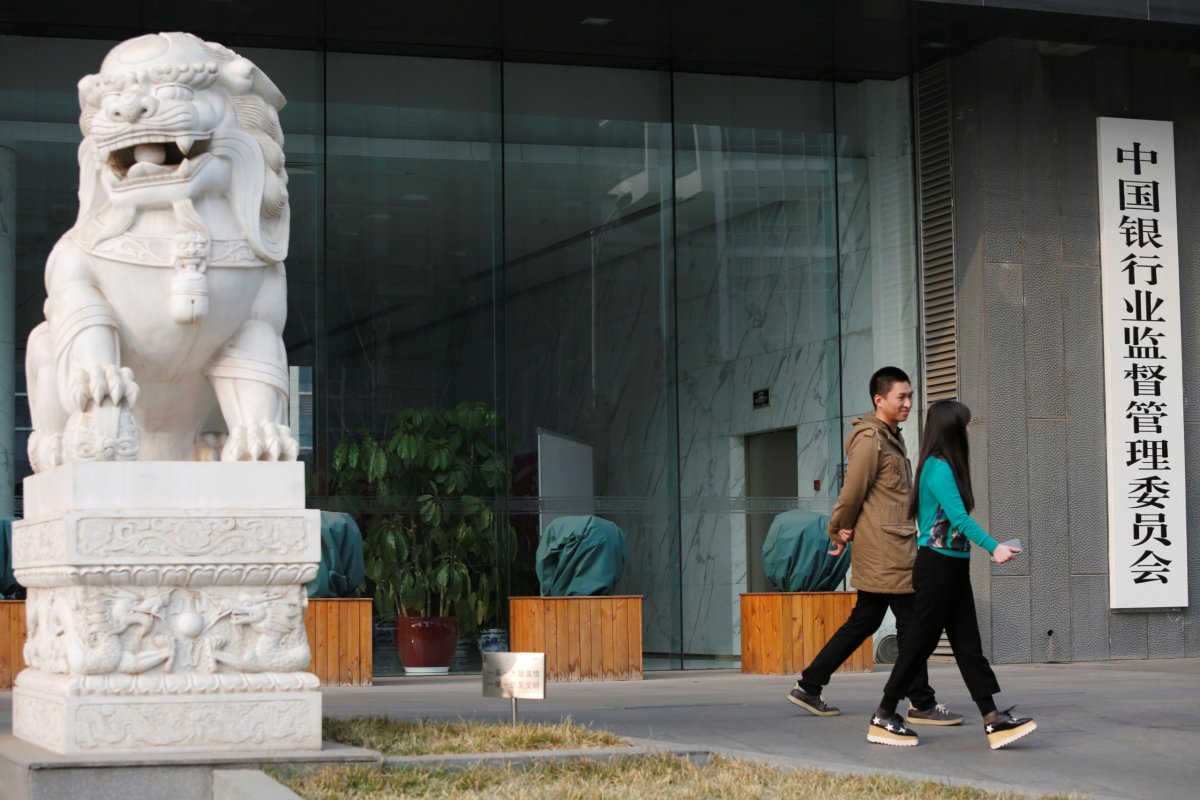By Engen Tham and Shu Zhang
SHANGHAI/BEIJING (Reuters) – Some of China’s biggest shadow banking groups are shopping for regulators in far-flung regions to help pass deals unlikely to be approved by more savvy regulators closer to home, according to multiple sources with direct knowledge of the situation.
The trend highlights the difficulties Beijing faces in applying regulations uniformly across the country and the lengths Chinese financiers will go in side-stepping Beijing’s ever-tougher crackdown on risk.
Financial companies and trusts, which are some of the most popular conduits for banks looking to get around tighter lending rules, have been partnering with other firms based as far afield as desert-locked Gansu province, Xinjiang and Inner Mongolia.
China’s banking regulator, which oversees trust lending, has bureaus in different regions in the country. Far-flung offices are often less sophisticated and tend also to be supportive of their local enterprises, said nine trust employees, two regulators and one lawyer.
Trust firms, including Ping An Trust, prepare loan documents and hand them over to the remote trust, which submits the documents to its local regulator, said two people with direct knowledge of the practice.
The fee which can be as high as 0.003 percent of the deal value is paid to the remote trust and the outside trust is listed on the deal as a consultant, said two people who have directly been involved in such deals.
China has no national database of all deals submitted to the CBRC, so products can be rejected by one bureau and then approved by another, said a person who recently left a regulator.
“Due to resourcing and employee quality issues, it’s difficult to prevent there being some looser bureaus and some stricter ones,” said one current Beijing-based regulator.
CBRC and Ping An Trust did not respond to requests for comment.
TRUSTING
The China Banking Regulatory Commission (CBRC) is set up on a regional basis, with each bureau overseeing financial firms registered directly in their area.
Regional bureaus have very different workloads and experience dealing with complex structured lending.
“In Shanghai, the regulator sees right through to what you’re hiding,” said one employee at a trust in Shanghai.
The Shanghai CBRC bureau has around 230 employees, while the northern Chinese region of Hebei’s bureau has around 200 employees, according to staff there.
While the difference in the number of employees is not large, there are seven trust firms and 23 banks registered in Shanghai giving staff ample experience, whereas Hebei only has 11 lenders and one trust firm to oversee – Bohai International Trust.
Bohai International Trust has seen an increase in enquiries from financiers for services this year, said one person with direct knowledge.
“The standard is the same in all bureaus, but with every project, there is always room to maneuver, to understand the deal,” said the source. “In Shanghai, the process of reporting projects is very formalized.” By contrast, the source said that in smaller cities “you can pick up the phone, make a call and explain.”
Wanxiang Trust – registered in Hangzhou – is another company which has seen an increase in inquiries from financial firms facing tougher regulations this year, said one person with direct knowledge.
“Sometimes it’s a case of local protectionism. Local bureaus will protect business interests in the area,” said the person.
Bohai did not respond to requests for comment, while Wanxiang Trust could not be reached for comment.
If there are differences in regional bureaus then “it definitely means that implementation quality is not so good,” said Richard Cao, an analyst at Guotai Junan Research.
REGULATOR SWAPPING
The shadow-banking sector has been put under the microscope as China’s regulators increase efforts to curb risk in the financial sector.
Total trust assets hit 24 trillion yuan ($3.80 trillion) at the end of September last year, over 30 percent higher than in September 2016, according to official numbers.
Growth increased in the first three quarters of last year as competitors of trust firm were hobbled by tougher regulations.
The crackdown is set to get even more severe this year, as prohibitive new asset management rules and the merger of the banking and insurance regulators helps close regulatory loopholes.
This has led the country’s shadow bankers to shop for more sympathetic regulators while the gaps still exist, said several sources.
It has also pushed insurers to team up with trusts, because their regulator, the China Insurance Regulatory Commission (CIRC), is seen as being stricter than its banking counterpart in approving financial products, said two people at two different trusts and one person at an asset manager connected to a major insurer actively looking for a trust firm.
In order for an insurer to issue a product, it has to get a certificate from the CIRC and the assets backing the product will be scrutinized, the sources said.
Meanwhile, at the banking regulator, for the same product issued by a trust firm, no certificate is necessary, and the assets backing the product won’t be scrutinized, they added.
But many are aware that these channels won’t stay open for much longer.
“I give it another three months,” said one person who works at a trust firm in Shanghai.
The CIRC did not respond to requests for comment.
(Reporting by Engen Tham and Shu Zhang; Editing by Jennifer Hughes and Philip McClellan)
















